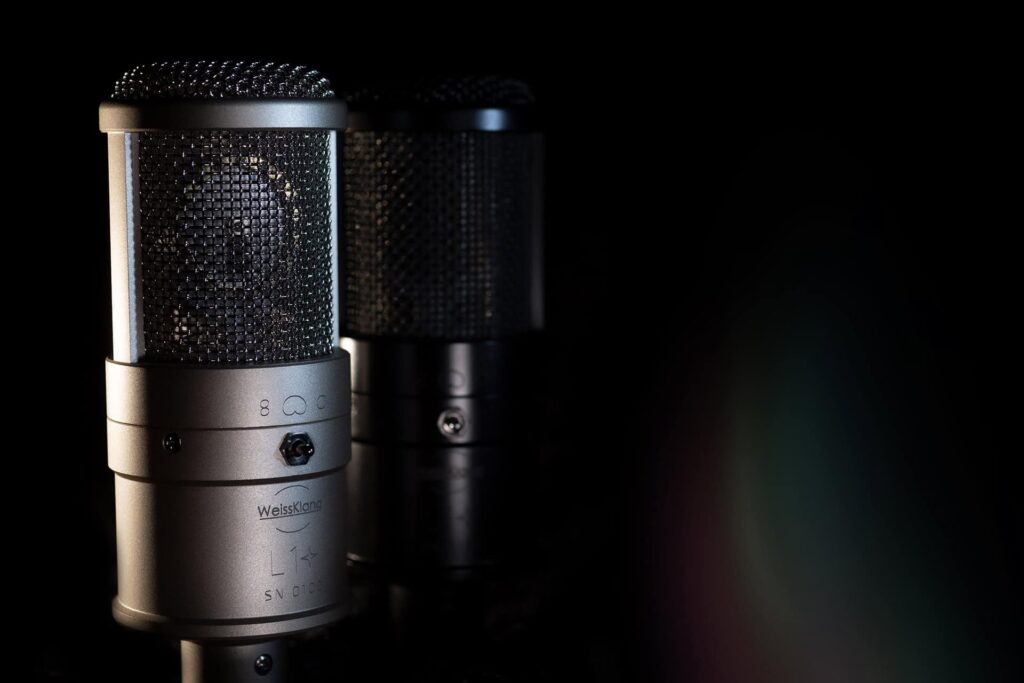



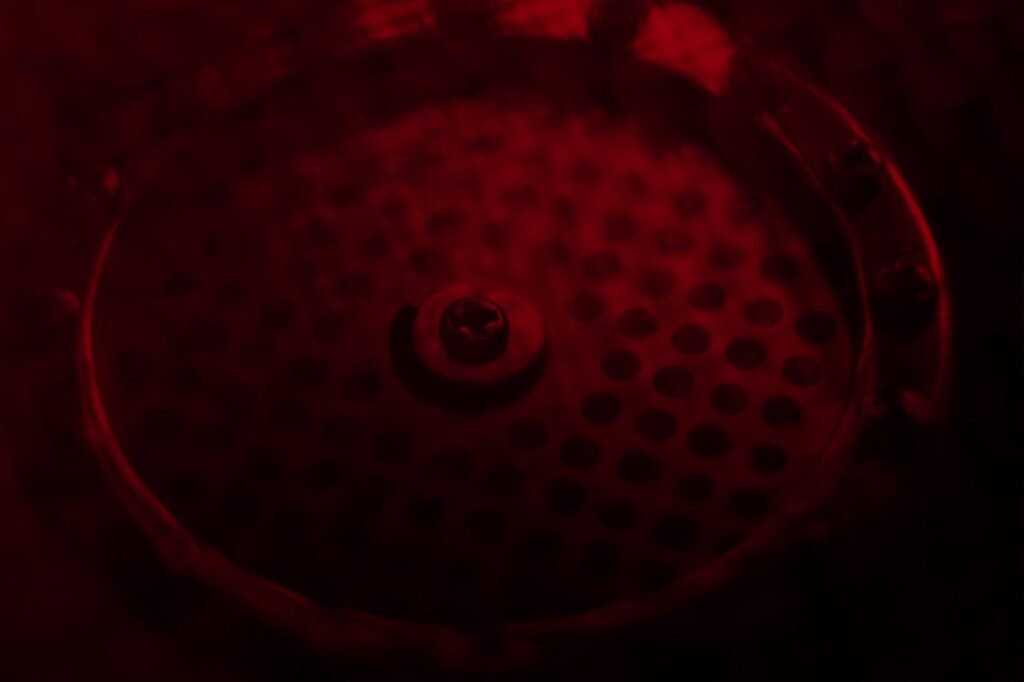
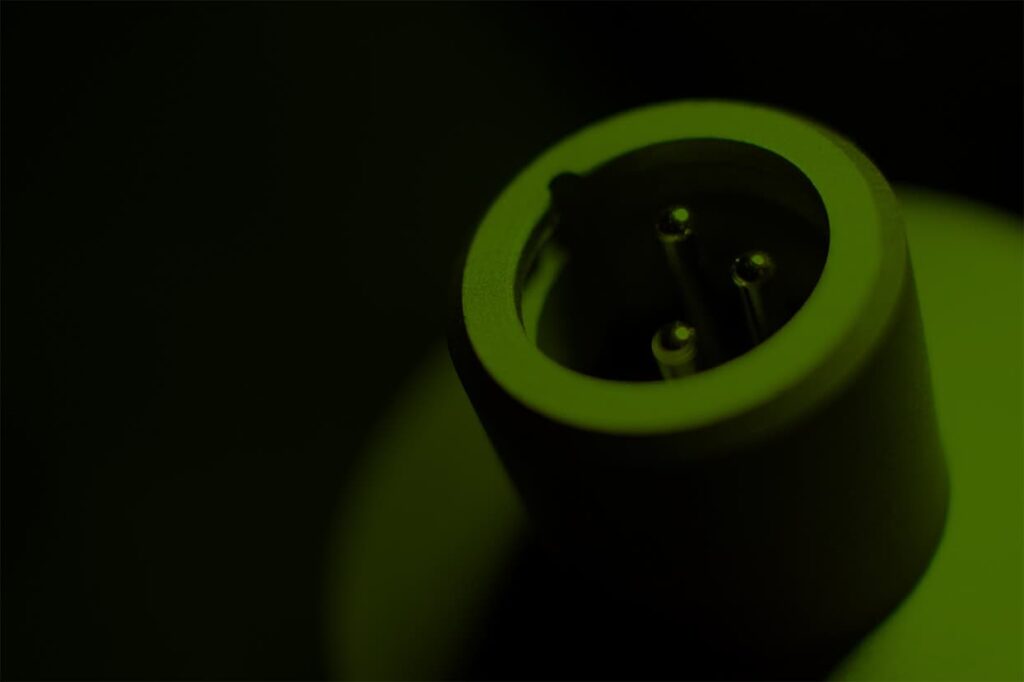
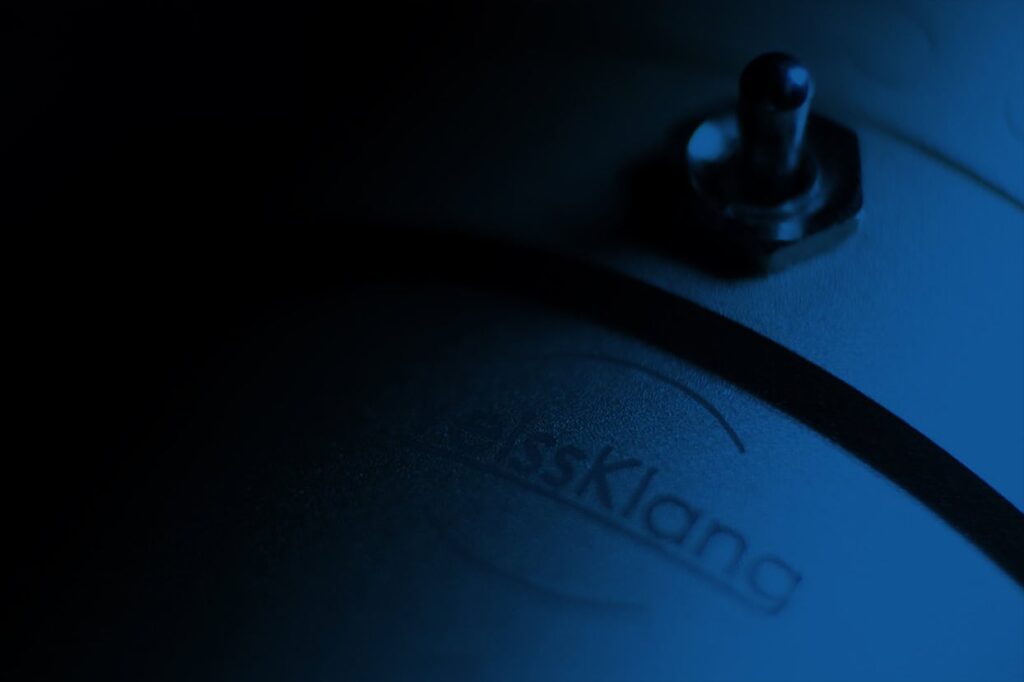
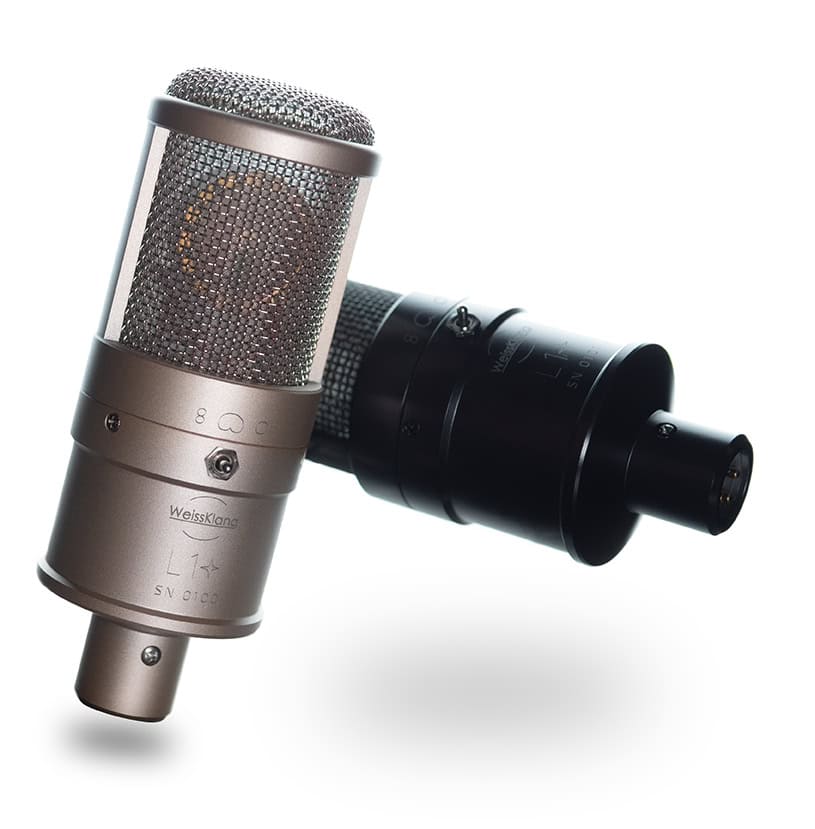
a large-diaphragm condenser microphone with exceptional sonic fidelity, impressive resolution, and a flexible character – designed to give you creative freedom in any recording situation.
The L1 Plus delivers a natural, very detailed sound, a wide dynamic range, and remarkably low self-noise. Its switchable polar patterns allow it to seamlessly adapt to various acoustic environments – from close-up vocals to ambient room recordings.
Housed in a compact, precisely engineered body, the L1 Plus represents modern microphone technology in its purest form.
The L1 Plus preserves the sonic character that made the original L1 so well-regarded – open, natural, and finely detailed – and expands it with true versatility.
At its core lies the newly developed, dual-diaphragm WMK-1D capsule, based on the proven design of the original WMK-1. It delivers the same precisely tuned frequency response, a subtle presence lift around 10–11 kHz, and the signature transparency of the L1
– now with the added flexibility of three selectable polar patterns: cardioid, omnidirectional, and figure-8.
The typical challenges of dual-diaphragm capsules – such as phase coherence, symmetry, and switching stability – have been fully resolved through targeted development. The result is a balanced and uncompromising sound across all polar patterns.
With carefully selected semiconductor components and a precisely tuned circuit, the L1 Plus captures transients in just 14 microseconds and renders both the source and the surrounding space with remarkable naturalness.
The L1 Plus features switchable polar patterns – cardioid, omnidirectional, and figure-8 – offering maximum flexibility and a consistent sonic character in every setting. Even with source movement, the sound remains stable, natural, and highly detailed.
Instead of a recessed or hard-to-reach switch, the L1 Plus uses a slightly raised, easily accessible toggle switch with a mechanically defined detent and a decoupled mounting system to reduce structure-borne noise transmission.
The robust switching mechanism is designed for demanding professional use and ensures precise, long-lasting performance under real-world studio conditions.
The L1 Plus was developed for both ambitious and professional studios – with the goal of combining maximum versatility and finest sound reproduction in a compact microphone format.
Thanks to its switchable polar patterns, it adapts effortlessly to a wide range of recording situations and delivers an open, natural sound with high resolution – whether for vocals, speech, or instruments.
Like all WeissKlang microphones, the L1 Plus is manufactured in Germany, featuring a low-resonance, rugged body and a high-grade circuit designed for minimal self-noise and wide dynamic range.
Despite its compact form factor, only large-format, discreet components are used – ensuring low-noise signal transmission and precise transient response at the highest level.
With an exceptionally low self-noise of just 4 dB-A, the L1 Plus is ideal for capturing delicate sources, quiet signals, and dynamically complex recordings – wherever every detail matters.
A maximum sound pressure level of 140 dB SPL and a wide dynamic range enable it to handle both subtle nuances and high-level sources with ease – cleanly, without distortion, and with precise transient reproduction.
The included MA-L shockmount mechanically decouples the microphone, significantly reducing noise – with low-frequency damping of up to 20 dB in cardioid mode, around 16 dB in figure-8, and approximately 12 dB in omnidirectional.
Replaceable rubber elements, an adjustable tilt mechanism, and a robust screw thread ensure secure mounting and flexible positioning in the studio.
An integrated pop filter within the grille protects the sensitive capsule from plosives and dust – without the need for additional accessories.
Thoughtfully designed – down to the last detail.
The L1 Plus was developed not only with sonic precision in mind, but also with a focus on sustainability and resource efficiency.
Production is carried out with a reduced CO₂ footprint, the packaging is fully recyclable, and the entire delivery is nearly paper-free.
Instead of printed materials, a USB stick included in the box contains all essential documents in digital form – compact, well-organized, and always accessible.
The supplied wooden case is made from FSC®-certified wood and manufactured according to strict sustainability standards – durable, premium in quality, and environmentally responsible.
Operating Principle
Pressure grading transducer
Directional pattern
Cardioid / Omni / Figure-8
Maximum SPL
140 dB (cardioid – at 0.5% THD)
Equivalent noise level (A-weighted)![]() 4 dB –
4 dB – ![]() 6 dB –
6 dB – ![]() 5 dB
5 dB
Equivalent noise level (CCIR 468-3)![]() 14 dB –
14 dB – ![]() 16 dB –
16 dB – ![]() 15 dB
15 dB
Circuit
Discrete transistor circuit
Supply voltage
P48±4 V
Connector
XLR 3-pin
Capsule
WMK-1D (gold-sputtered – Ø: 32 mm)
Frequency range
20 Hz – 22.000 Hz
Signal-to-noise ratio (A-weighted)![]() 90 dB –
90 dB – ![]() 88 dB –
88 dB – ![]() 89 dB
89 dB
Signal-to-noise ratio (CCIR 468-3)![]() 80 dB –
80 dB – ![]() 78 dB –
78 dB – ![]() 79 dB
79 dB
Sensitivity (mV/Pa)![]() 23 –
23 – ![]() 18 –
18 – ![]() 20
20
Rated Impedance
50 Ω
Current consumption
3.2 mA
Weight
414 g
For listening we recommend high resolution speakers or headphones.
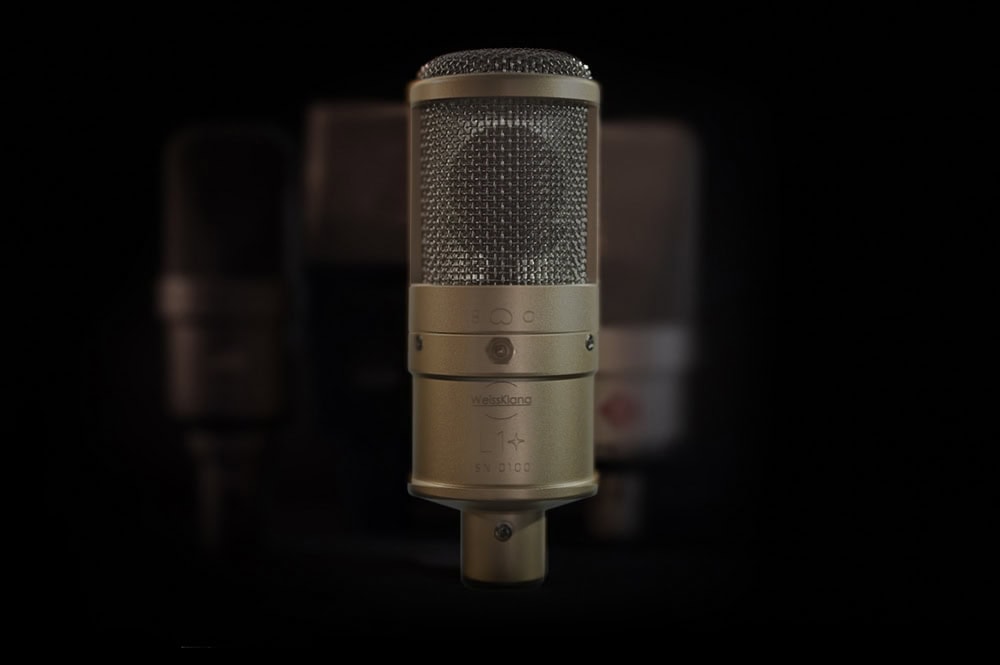
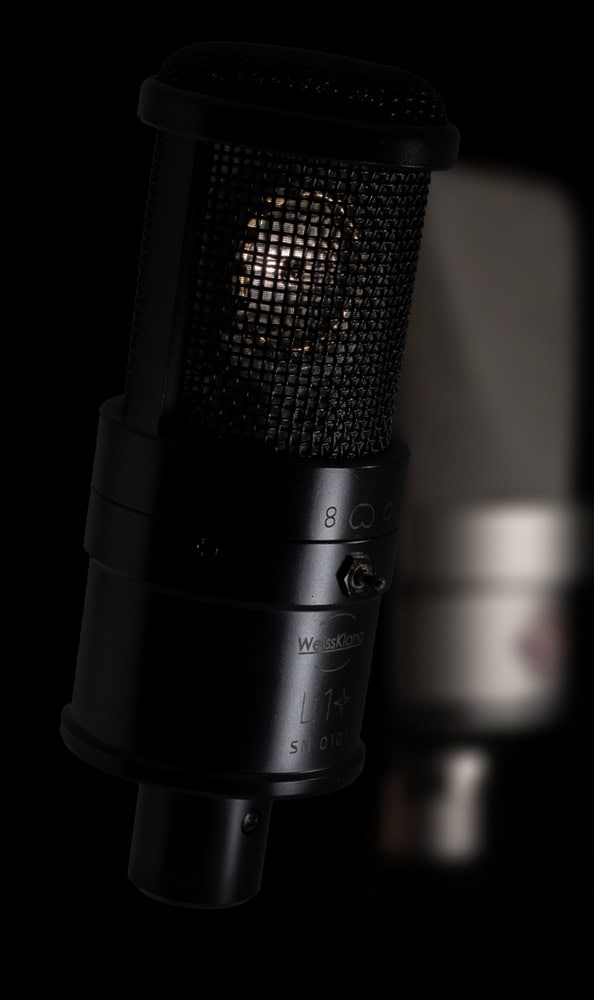
– Made in Germany (1997-)
– Amplifier: Transistor
– Price: appx. 1199 EUR
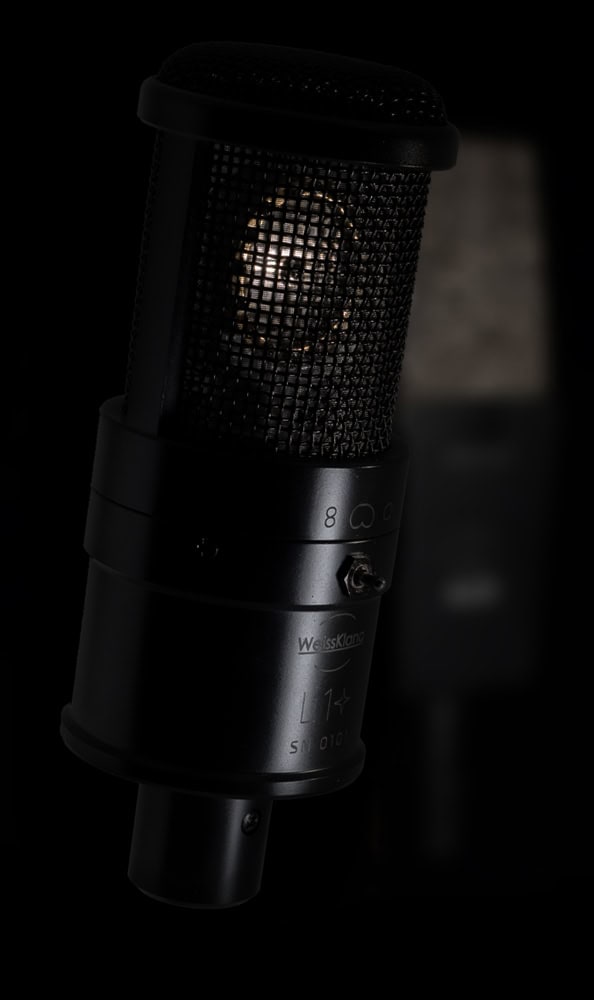
– Made in Austria (1986-2004)
– Amplifier: Transformer
– Price: appx. 800 EUR
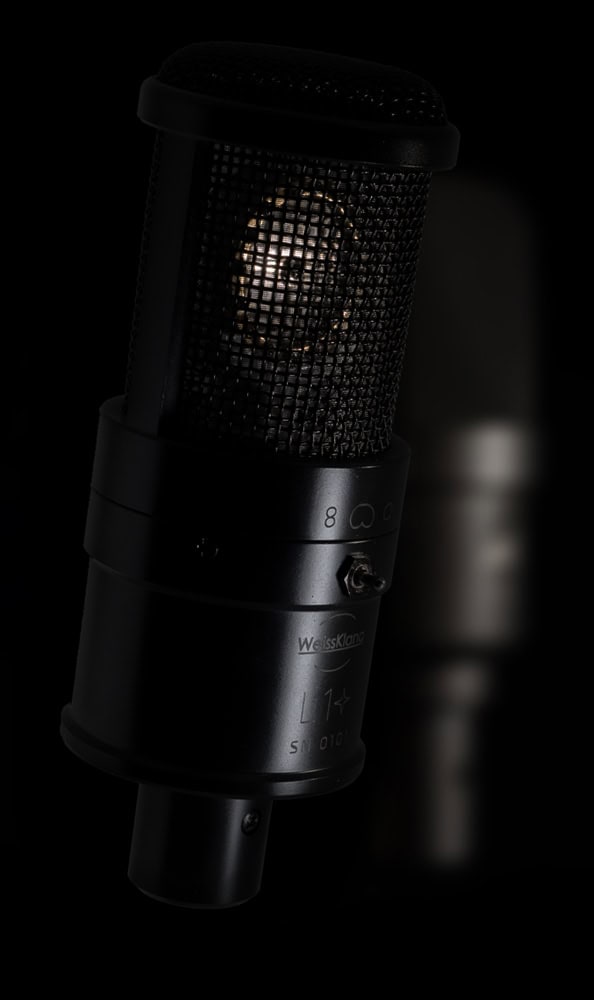
– Made in Germany (2011-)
– Amplifier: Transformer
– Price: appx. 1649 EUR

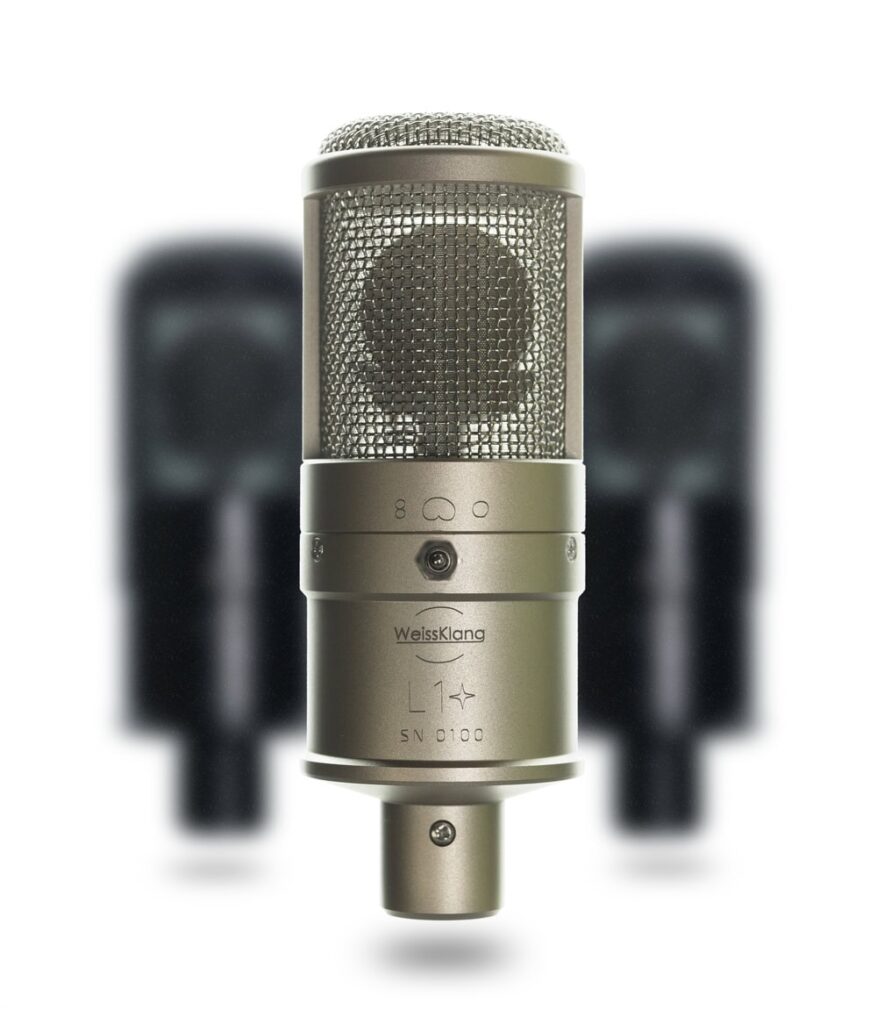
Subscribe to our free newsletter
and get your WeissKlang microphone at a special price
Of course we’ll respect your privacy. The email newsletter is sent out about once a month.
For further details about how we will use your email address please see our Privacy Policy.